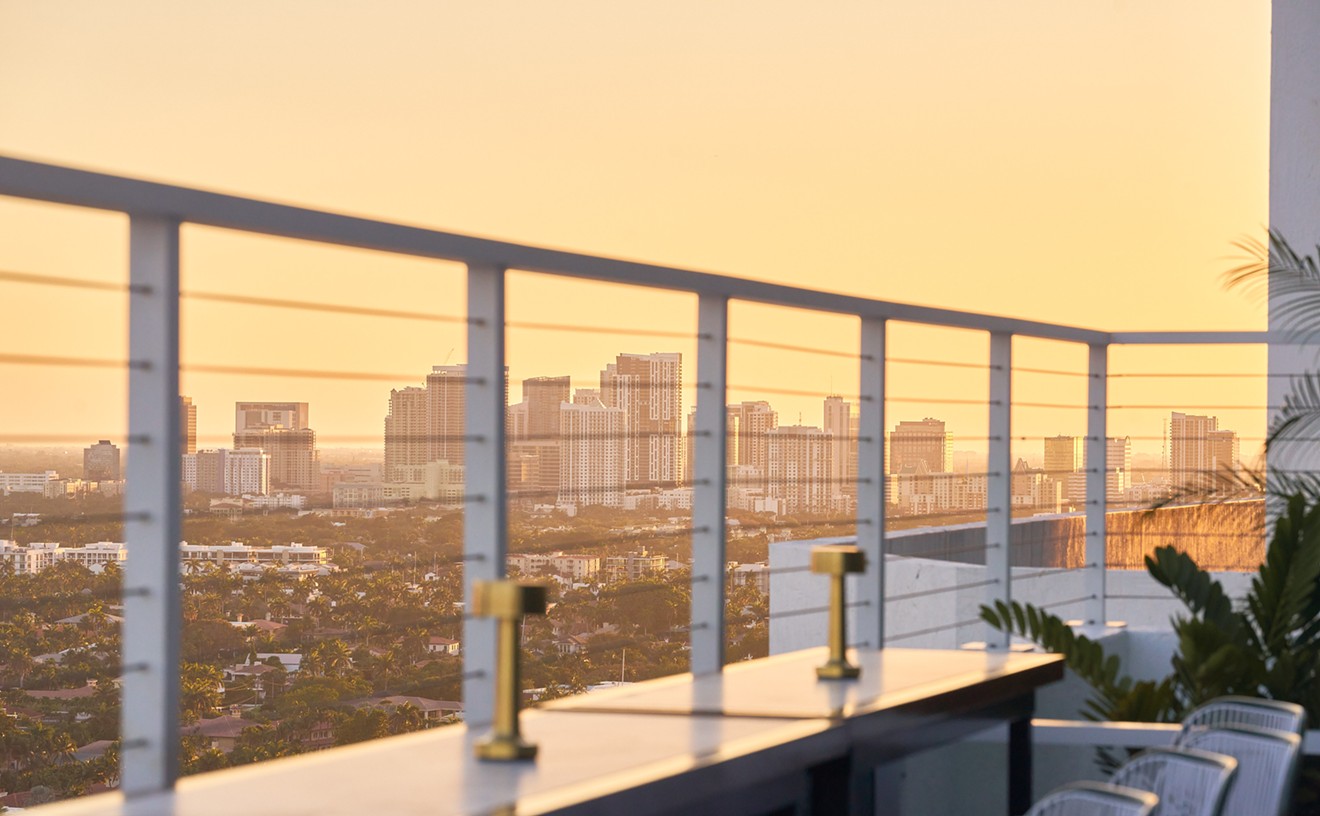First, fresh, uncooked Argentine beef, which had been banned for import since 1930 because of an outbreak of hoof-and-mouth disease, was allowed back into the United States in 1997 (albeit with a 20,000 ton quota). Couple the virus-free meat with the fact that around this same time, Europe's cows were quite literally driving people crazy: They were infected with mad-cow disease, which passes on to humans the terrifying and fatal Creutzfeldt-Jakob disease. Given the few years it would take for Argentina's then-27 meat suppliers, according to the Associated Press, to become organized and promote what has essentially become a new, life-inspiring product, the timing seemed about right to see handfuls of parrilladas pop up.
Second, Argentine Angus, which graze free-range on the humid pampas, where high-protein alfalfa, wheat, and oat grasses grow, have roughly half the fat of grain-stuffed American beef. Wine Spectator reported in 1998 that "a four-ounce portion of USDA choice beef tenderloin has 10.8 grams of saturated fat, 80 milligrams of cholesterol, and 328 calories, compared with 2.5 grams of saturated fat, 70 milligrams of cholesterol, and 140 calories for the same cut of Argentine beef.... The fat, cholesterol, and calorie profile of Argentine beef more closely approximates venison than American beef." Heart patients and weight watchers everywhere rejoiced to see beef in their diets once again. Animal rights' supporters no doubt were in Heaven themselves, as the wide-ranging cows apparently are "in Nirvana," as the Wall Street Journal wrote in 1998.
And finally, Argentine beef tastes like, well, meat. Although not everyone prefers the more mineral, gamy undertones of the product, particularly those of us raised on fatty, corn-fed flesh, Argentine beef can really jump-start a bored or jaded palate, much like a serving of elk or bison might. It's just something a little different: something with the exotic flavor of the legendary gauchos attached to it, something simply grilled, a little textured, and served with garlicky chimichurri rather than broiled, "like buttah," and smothered with staid ketchup.
No doubt I've been one of the most enthusiastic supporters of Argentine beef. Forgive me, Capital Grilles of the world, but I'm far happier munching away at a just-chewy skirt steak than I am sawing away at a huge porterhouse. Indeed I make it a point to seek out the parrilladas, a habit that has become relatively easy to indulge lately in almost every local neighborhood: Kendall (Graziano's Parrilla Argentina); Coral Gables (Pampa Grill); Edgewater (Alfredo's Argentinian Restaurant); Bal Harbour (al Carbón); mid-Miami Beach (Campo Argentino); and South Beach (Baire's Grille).
Although I haven't exactly been duped, I've certainly been misled. Of the half-dozen restaurants I investigated for this story, only one, Las Pampas Grill on 163rd Street in North Miami Beach, claims to use only Argentine beef. In fact many places don't even use any imported meat at all, relying on good ol' American steaks for their stock.
Gaucho Café, for instance, a five-month-old Argentine eatery on SW Eighth Street, "serves the Argentine way, but uses American beef," manager Gus Longo admits. He couldn't tell me why, exactly. "I don't know. We just do."
But Alexandro Del Azar, co-owner of one of the area's most popular Argentine restaurants, the six-month-old Tango Beef Café on Normandy Drive in Miami Beach, explains it a bit better, with a lot more emphasis. He won't even consider using that nation's beef, despite the fact that he himself is Argentine (co-owner and wife Sandra Bandeira is Brazilian). "I live in America," Del Azar declares proudly. "I consider myself 100 percent American." But patriotism may not be the real reason Del Azar serves only certified Angus beef from Texas. He admits that "Argentine beef is very good, very tasty. But it is not for the American customer, because it is not standardized."
In other words, though imported beef from Argentina is inspected for disease and temperature control, it's not graded according to the U.S. system. Or any system, actually. So you never really know whether you're buying prime, choice, select, or, say, dog-food cuts of beef. As a consumer all you can do is examine the exterior of the cut to see if it's what you want. (Carnivores should keep in mind that the less marbling there is, the less juicy and tender, supposedly, the meat will be.) For a restaurateur the variations in a single box of steaks can be overwhelmingly frustrating.
In addition, Del Azar claims, the meat is "in the hands of people who don't understand the American way," which is "not good for the market. We have to go through people who are monkeys." Indeed these primates, a.k.a. Argentine wholesalers, tend to run out of stock unforgivably often, blaming customs or the unpredictability of the airlines. And, says Del Azar, "Prices can be high for no reason."
This despite the fact that Argentina, the world's fourth largest exporter, provides reliably cheaper meat than American or other imported beef. In 1998 Wall Street Journal writer Craig Torres found that "Argentina's fresh, pasture-fed beef is usually priced about ten percent to fifteen percent less than domestic beef." The Meat Industry Insights News Service recently reported that internal cattle prices, the cost of live animals, dropped 22 percent in 1999, which translates into lower prices abroad. Frank Randazzo, executive chef at the Gaucho Room in the Loews Hotel, estimates that "prices on Argentine beef are less, even adding in the import taxes, by about 25 percent per pound. The abundance of meat there means prices are low."
Still, Randazzo only imports two out of a handful of cuts, tenderloin and rib eye, for his Argentine-flavored menu. "I can't guarantee the consistency or quality of the rib eye, because the meat is not graded. You don't know if it's prime or choice. All you know is that it has met American inspection standards." He says he doesn't usually have trouble with the tenderloin, which is a nonworking muscle, but he notes that the rib eye "is the biggest pain on the menu. The texture and marbling just varies too much."
Not all Argentine restaurateurs have cut imported beef out of their customers' diets for quality control, cost efficiency, or availability reasons. At Parrillada Las Vacas Gordas on 71st Street in Miami Beach, Uruguayan-Argentine proprietor Luis Gajer has never served Argentine Angus, probably because he opened four years ago, just before the embargo was lifted. "I only use American beef, because I started with American beef," he explains. "I have had no complaints, so I have no need to try any other thing."
So what accounts for the spread of Argentine steak houses? "People see something successful, and they want to copy it," Gajer notes. Agreed, says manager Maria Segato at La Chacha in Hialeah, a twenty-year-old steak house. Incidentally La Chacha provides only one cut of Argentine beef: the sirloin. The rest are domestic.
To be fair, Argentina has been taking steps to comply with American inspection practices, and their cattle-raising techniques can't be faulted. Still, they might want to reconsider the latest proposal, installing microchips in cattle to keep track of the herd. The estimated 100 million annual dollars the program would cost might be better put to use grading the beef and controlling the wholesalers, many of whom, like local diners eager to jump on the trendwagon, seem to exhibit herd mentality themselves. Then perhaps our about-to-open parrilladas, like the one set to debut next door to Caffe Sambuca on Lincoln Road in South Beach this week, can proudly serve all Argentine cuts of meat. And we can honestly say we prefer it.










